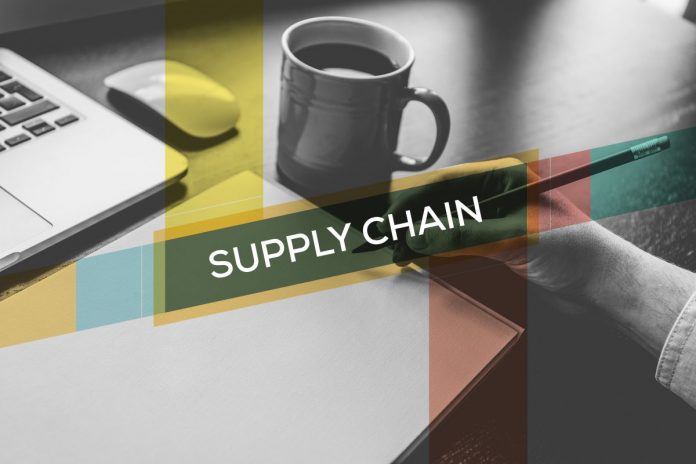Worldwide digital supply chains are creating a greater focus on customer satisfaction. Lars Fredenlund, Chief Executive of coBuilder, examines where the construction industry stands
According to Forbes Insights, entrepreneurs see today’s technology-enabled digital supply chains as means to unlocking far bigger rewards than merely increasing efficiencies. Among these rewards are the transition from a product-centric to a customer-centric approach that leads to increased agility of all business functions and, of course, revenue growth. However, businesses worldwide are still in the early stages of supply chain digitisation. In the construction industry – an industry not famous for its high levels of digitisation – things are just starting to stir. Then, the question for us is: Where are we at in relation to the customer-centric supply chain mindset?
Digital strategy based on end-user satisfaction
As we have noted before, the most important feature of digital supply chains is their focus on customer satisfaction. In the construction industry, end-user satisfaction is increasingly becoming paramount as end-users are more aware of the need to extract value from the construction process.
Together with the BIM agenda and the grand industry objectives to reduce cost and environmental impact, and promote efficiency in the lifecycle of built assets, it was difficult not to see BIM or digitisation as an end.
This is why, at first, clients and general contractors in the UK were predominantly interested in how they can meet the BIM Level 2 requirements. COBie was the new buzzword and requests for software proposals were flooding the IT service providers.
However, as BIM education and understanding among AECO experts started to keep up with the pace of government mandate, the industry started seeing a clearer path towards BIM as something more than a regulation.
They saw that the ultimate goal of a digitised supply chain in the AECO sector was to deliver value to the end-user through the seamless flow of digital information; that serious business opportunities were to be monetised and at that point the industry started to move.
The progressives
Digital supply chains employed by the most progressive industries, such as the retail, pharmaceutical and automotive sectors, have already set out the steps to derive the most value from IT. How? By using technology to streamline the relationships between devices, products, locations and customers, by using shared information resources, information modelling and smart analytics, and by adopting automation. In short, the industries with highest maturity of their digital supply chains have utilised the basics of information management.
Information management – the hardest bit
Information management is inherently a bureaucratic process; regulations, laws and auditors require controls to exist. Sometimes when people are faced with the latest PAS documents or the upcoming ISO19650, they might think that these overly complicated documents are a hindrance. However, in order to establish strong information management processes, allowing access to clear, accurate and trustworthy data across your enterprise, you will have to create standardised, repeatable processes. This cannot be done without guidelines.
Do you know that the most common errors in big data projects in Silicon Valley have more to do with methodology than raw technology? In that sense, the AECO sector has made the most important step towards upgrading its large-scale operations towards digital supply chains that will pay many dividends. We have set out the strategies, but have we adopted the mindset?
Let’s think about the end-user
Sometimes the abbreviation BIM is understood as Better Information Management. The beauty of BIM, clear to all those who have learned to understand its complicated language, is that the whole mandate, all the guides and guidelines written around it, is moving the industry towards adopting a robust digital strategy first and then looking at technology. To this end, then, getting familiar with and adopting digital BIM strategies is a very important step that can propel the industry towards leveraging the benefits of promised by digital supply chains.
This, however, should be taken with a little pinch of salt. Only when the we’ll see phase in BIM – ‘starting with the end in mind’ shifts to ‘starting with the end-user in mind’ – will there be certainty that there is an alignment between the objectives of digitisation in the construction industry and the bigger, wider scope of supply chain digitisation.
How does the process look? Through digital data about each installed product, the subcontractors are able to reveal the value they are adding to the building by fulfilling the client’s requirements. Centralising the management of this data, the contractor is able to affirm the credibility of the way their digital supply chains and information management processes are set up. Integrating this already cleansed and quality-checked data, facility managers are able then to take advantage of the digital O&M (the AIM) in their own systems over the course of the exploitation of the facilities.
All these consecutive points of ‘truth’ in the supply chain have a direct effect on how clients can fulfil the needs of the end-users of their built assets. It is with tools like ProductXchange that the industry can finally get on its way toward customer-centricity – a business model that is central to the immense growth that we have seen in sectors with higher digitisation maturity levels.
Lars Fredenlund
CEO
coBuilder AS
Tel: +44 747 194 73 46
Twitter: @coBuilderUK














